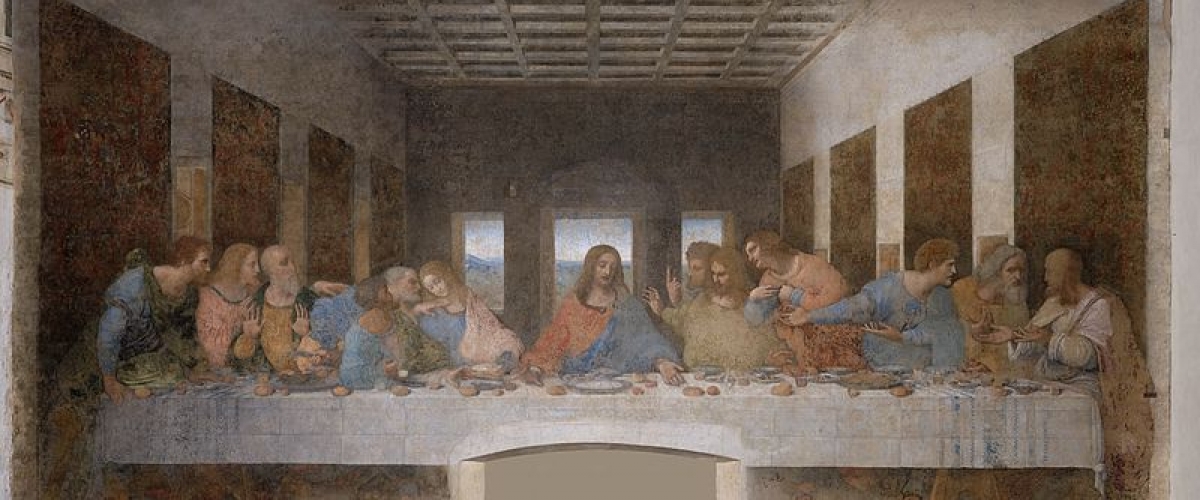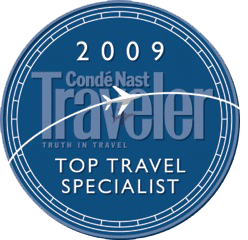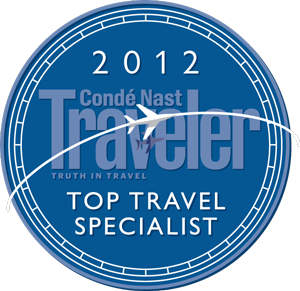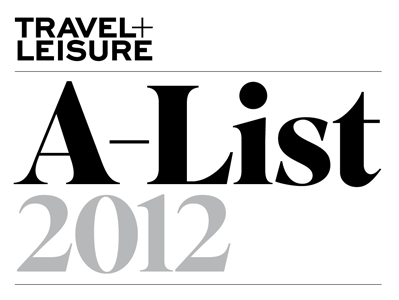While the region of Lombardy, where Milan is located, actually has some of the most UNESCO heritage sites of all Italian regions, the city of Milan has just one, but it is special enough to draw many visitors to the city who wouldn’t visit otherwise.
Subscribe to this list via RSS
Blog posts tagged in italian travel

If you eat truffles in high-end American restaurants, you’ll easily pay hundreds of dollars for a few shavings.
In Italy, especially during the truffle hunting season and the Alba International White Truffle fair, it seems like there’s so many in circulation, it’s hard to understand why prices are so high!
Truffles Cannot be Grown, Only Found
Finding a fist-sized white truffle—white truffles are rarer than black summer truffles—is no easy feat. They’re so hard to come by that truffle hunters go out at night to keep anyone form following them to their best truffle foraging grove.
Dogs—not pigs, who might eat the truffles they find—paw at the ground when they find the scent—and truffle hunters unearth their prize with a special, spade-like digging tool.
And while truffle hunts for tourists can make the whole thing look simple, digging up handfuls of black truffles in just a couple hours, it can take trained truffle hunters and their dogs weeks to come upon the massive truffles you see at the market, often pulling 12-or-more-hour days all the while.
The International Truffle Fair
In the end, the hunt is worth it though. At the international fair, white truffles can fetch 3,000 euros a kilo!
When I saw hunters selling their wares out of the trunk of their car on the side of the road, though, the truffles were going for 250 euro a kilo.
For consumer, it is a huge savings to get them from the source, before they go through layers of middlemen at the markets and restaurants to finally reach your plate.
Cooking with Real Truffles at Home
For cooking yourself, it’s best to get the grated truffles stored in oil, but if you get your hands on the real thing, there are two perfect ways to enjoy it.
In our newsletter, we showcased a recipe for Tajarin with Truffles, the traditional handmade Piemontese pasta that is the best loved accompaniment for these treasured tubers.
But my favorite way to enjoy them—which also happens to be the most simple—is grated over fried eggs.
Taxes, tipping, and service charges in Italy are an ever fluid subject that never fails to befuddle visitors. No matter how many times you’ve been, these things are highly subject to change, and just recently, the city of Rome dramatically upped their hotel taxes, so I wanted to talk to you about how these work.
Hotel taxes apply even if you are not stay in something that would be strictly referred to as a hotel. They come up at:
The only exception is hostels, and the prices of the tax depends on the level of the establishment. 1- and 2-Star hotels stars carry a 3 EU per night tax, 3-star hotels a 4 EU per night tax, 4-star hotels a 6 EU per night tax, and 5-star hotels a 7 EU per night tax.
Agriturisms are taxed 4 EU per night, camp sites 2 EU per night, and all other types of accommodation 3.5 EU per night. And all prices are per person.
As hotels do not want to constantly raise their prices to reflect these taxes, you must pay the taxes separately from your room rate, typically on arrival. The hotel taxes go toward services for tourists, as well as tourism marketing, in addition to city developments that affect tourists, such as street improvement.
Hotel taxes apply even if you are not stay in something that would be strictly referred to as a hotel. They come up at:
- hotels
- B&Bs
- rental homes and apartments
- camp sites
- guest houses
The only exception is hostels, and the prices of the tax depends on the level of the establishment. 1- and 2-Star hotels stars carry a 3 EU per night tax, 3-star hotels a 4 EU per night tax, 4-star hotels a 6 EU per night tax, and 5-star hotels a 7 EU per night tax.
Agriturisms are taxed 4 EU per night, camp sites 2 EU per night, and all other types of accommodation 3.5 EU per night. And all prices are per person.
As hotels do not want to constantly raise their prices to reflect these taxes, you must pay the taxes separately from your room rate, typically on arrival. The hotel taxes go toward services for tourists, as well as tourism marketing, in addition to city developments that affect tourists, such as street improvement.
How much should you tip in Italy? What is a “normal” percentage to tip in Rome? These Italian tipping custom questions t some point in your trip to Italy, these questions
If you leave a “normal” American tip, depending on where you are, the recipient may try to give it back to you, saying you paid too much. The waiter may even run out of the restaurant after you!
But this typically happens more in smaller towns, the kind of places where the proprietor is much more likely to give you an after-dinner amaro for free or take dessert off your bill for no reason than stiff you on extra service charges.
Rome, famously, has outlawed several types of service fees and charges added to the bill in light of confused visitors who don’t understand why they are being charged for bread even when they didn’t ask for or eat the bread.
Still there are many places where various fees, including for service, are added to your check automatically. You’ll usually see one fee called the coperto or pane, which is not for bread but actually more of a per person basic charge for dining in a restaurant.
“Servizio,” or service, is also often charged automatically on restaurant bills, in part because waiters in Italy are paid very differently than in the U.S. (i.e. better), but also because you will often be helped by multiple people throughout your meal.
You don’t really have to leave anything in addition to this, but it is customary to round the bill and leave some extra “spiccioli” or loose change with the rest of the bill.
Outside restaurants, the tipping situation is much easier to navigate. In taxis, tipping is not necessary and you can tell them to keep the change.
For porters or maids at the hotel, follow the standard one euro per bag or room night formula
For guides, translators, drivers and other special, personalized services, tip as you feel appropriate, but 10-20 euros for a full-day is customary.
If you leave a “normal” American tip, depending on where you are, the recipient may try to give it back to you, saying you paid too much. The waiter may even run out of the restaurant after you!
But this typically happens more in smaller towns, the kind of places where the proprietor is much more likely to give you an after-dinner amaro for free or take dessert off your bill for no reason than stiff you on extra service charges.
What to Tip in Restaurants in Italy
Rome, famously, has outlawed several types of service fees and charges added to the bill in light of confused visitors who don’t understand why they are being charged for bread even when they didn’t ask for or eat the bread.
Still there are many places where various fees, including for service, are added to your check automatically. You’ll usually see one fee called the coperto or pane, which is not for bread but actually more of a per person basic charge for dining in a restaurant.
“Servizio,” or service, is also often charged automatically on restaurant bills, in part because waiters in Italy are paid very differently than in the U.S. (i.e. better), but also because you will often be helped by multiple people throughout your meal.
You don’t really have to leave anything in addition to this, but it is customary to round the bill and leave some extra “spiccioli” or loose change with the rest of the bill.
Tipping for Taxis and Other Services in Italy
Outside restaurants, the tipping situation is much easier to navigate. In taxis, tipping is not necessary and you can tell them to keep the change.
For porters or maids at the hotel, follow the standard one euro per bag or room night formula
For guides, translators, drivers and other special, personalized services, tip as you feel appropriate, but 10-20 euros for a full-day is customary.
Italian Tipping Vocabulary
- conto: the bill
- coperto: the base per person cost of dining in a restaurant. Though it is often thought of as a fee for bread and water, you must pay it even if you don’t partake in those “complimentary” offerings
- servizio: fixed service charge—usually an amount though sometimes a percentage—that appears on restaurant bills
- incluso: included
- spiccioli: small change or loose change. Often referrers to very small denominations, but it typically used just to mean whatever random change you have in your pocket.
If you’ve been to Italy, you’re no doubt already acquainted with the simultaneously charming and confusing fact that greetings in Italy vary so widely by time of day and relationship that you might find yourself hearing over a dozen variations in one day!
Italians do not expect foreigners to have these down perfectly, of course, but they will be highly impressed if you get them spot on. It’s a great way to start a relationship, whether with your tour guide, a shop keeper, or hotel concierge, even if the conversation continues in English.
Italian has an entirely separate pronoun for the second person (you) when you want to be formal (Lei) than when you want to be casual (tu). So it makes sense that one of the biggest dividing lines between Italian greetings is the level of formality.
When you are meeting for the first time, the person is in a position of authority, or it is a one-off conversation like you may have trying to buy a train ticket, you should always stick a formal greeting.
The easiest formal greeting, which you can use at any time of day or in any situation is “salve,” which translates roughly as something akin to “salutations,” even though that is very old-fashioned and out of use in English today.
“Salve” can be a tad to formal for many situations, so the best thing to do is learn the different “good day”-style greetings for each time of day:
The ubiquitous “ciao,” which has now extended past Italian boarders not only to occasional appearances in the U.S., but also a common role in German, Spanish, and other European conversations, is best reserved for friends and closer aquaintances.
Even in those cases, however, it’s usually followed with some variety of how are you:
Italians do not expect foreigners to have these down perfectly, of course, but they will be highly impressed if you get them spot on. It’s a great way to start a relationship, whether with your tour guide, a shop keeper, or hotel concierge, even if the conversation continues in English.
Formality First: Formal Italian Greetings
Italian has an entirely separate pronoun for the second person (you) when you want to be formal (Lei) than when you want to be casual (tu). So it makes sense that one of the biggest dividing lines between Italian greetings is the level of formality.
When you are meeting for the first time, the person is in a position of authority, or it is a one-off conversation like you may have trying to buy a train ticket, you should always stick a formal greeting.
The easiest formal greeting, which you can use at any time of day or in any situation is “salve,” which translates roughly as something akin to “salutations,” even though that is very old-fashioned and out of use in English today.
“Salve” can be a tad to formal for many situations, so the best thing to do is learn the different “good day”-style greetings for each time of day:
- “buongiorno” can be used from morning until after lunch
- “buona sera,” which literally means “good evening,” can be used all afternoon and evening, though in some areas, it is more correct to say “buon pomeriggio” (literally good afternoon) until dinner time
”How’s it going?” And Other Casual Greetings
The ubiquitous “ciao,” which has now extended past Italian boarders not only to occasional appearances in the U.S., but also a common role in German, Spanish, and other European conversations, is best reserved for friends and closer aquaintances.
Even in those cases, however, it’s usually followed with some variety of how are you:
- “come sta?” (formal)
- “come stai?” (informal)
- “come va?” (very informal)





















